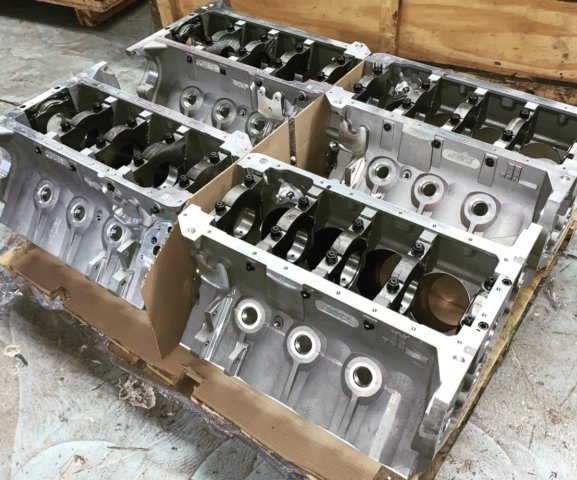
When you hear someone say they got their parts from Bill Mitchell Products (BMP), you know they are sporting some serious hardware under the hood. Well, Big-block Mopar fans, it is time to celebrate. In late November, BMP had their first run of aluminum block castings. These blocks were developed by the BMP engineers in cooperation with Chrysler racers to develop a refined version of the 426-style big block. The aluminum block was designed with the assistance of CAD/CAM 3-D technology, which provides specifications that are extremely precise compared to the looser tolerances of the OEM blocks from the 1960s.
The block is constructed of 357-T6 aluminum with a 10.725-inch deck height and a minimum deck thickness of 0.600-inches. The camshaft location is in the factory position in the block and can be used with stock bearings, or the block can be machined to house a 60mm bearing. The lifter bores are the typical Mopar 0.904-inch size and sleeved with bronze bushings. The cylinder bore spacing is 4.80-inches, and the bores are available in 4.240-inches or 4.490-inches with a maximum bore size of 4.560-inches. The cylinder bores are a Siamese design, and they are a replaceable, centrifugal cast ductile steel press-in fit (the sleeves are a dry sleeve design).
Above left: Bill Mitchell Products has released a 357-T6 Aluminum 426 Hemi block with a 10.720-inch deck and either a 4.240- or 4.490-inch bore. The block has a standard cam location and utilizes 0.904-inch lifters. Included with the block are screw-in core plugs, screw-in cam plug, and all the pipe plugs and dowel pins. Above right: BMP engineered a highly-refined design of the 440 Wedge big block. To achieve the superior block, BMP relied on CAD/CAM 3D technology for the Wedge and Hemi blocks. The blocks received special attention to the cooling system water jackets, refined lubrication control, and were designed with a dual bolt pattern bellhousing to fit Torqueflite or GM transmissions.
BMP made great efforts to improve the cooling system of the casting, which reduces the chances of hot spots and irregular cylinder wear. All the cylinder head bolt holes are blind holes, so there is no penetration into the water jacket. The oiling system of the block is a priority main oiling design that is setup to work with a stock-style external oil pump, but it may be converted to a dry sump oiling system. The oiling system can use any production filter and is in the OEM location. Any factory pan will fit the block.
The block can swallow a 4.500-inch stroke crankshaft, and with additional machine work, it can accommodate a 4.750-inch stroke. The main caps are a nodular iron two-bolt design with cross-bolts (the rear cap does not have cross-bolts). All the caps are held in place by ARP ½-inch main studs. The fuel pump and starter are in the OEM locations, and the engine mounts are standard. However, the driver side engine mount on the wedge block must be machined to seat the mounting pad. The block comes with a dual transmission pattern, which allows the use of a Torqueflite or GM transmission. The block is rough cast and will require finish machining to meet the owners/machinists needs.
If you are interested in an aluminum block for your street ride or your drag car, check out Bill Mitchell Products for their latest big-block Chrysler castings.



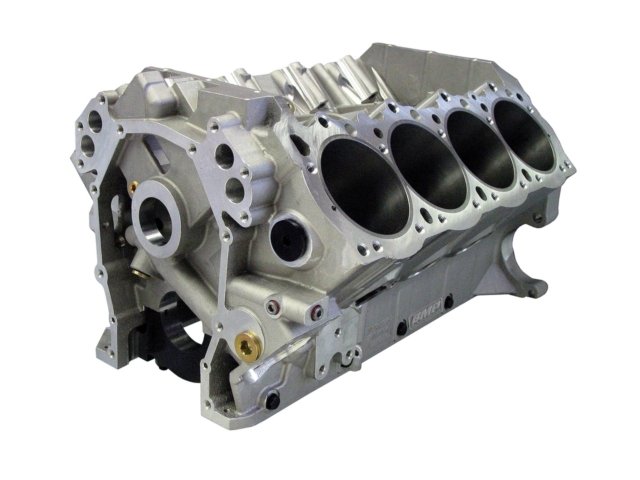


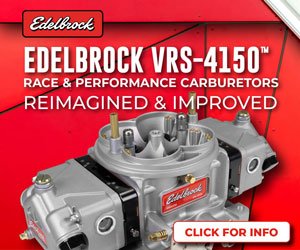
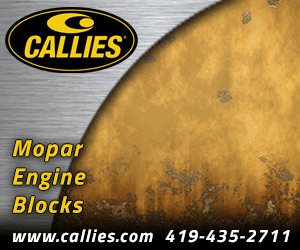
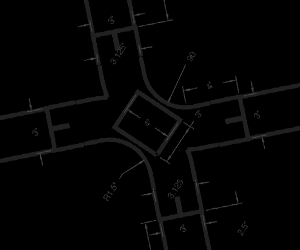

Is anyone looking to make a decent block for the small block for mopar fans? There are plenty of go fast parts manufacturers for the l.a but No one seems interested in making an actual block ?????
Con, there are plenty of options depending upon the thickness of your wallet. There are resto 48 degree lifter angle 340 blocks (also available with Siamese cylinders). There are R3 and R4 blocks, but they do not have engine mount bosses cast in the block. Ritter Racing casts blocks with 340 mains and 48 or 59 degree lifter angles and engine mount bosses. All the blocks are cast iron.
Depending upon what block you select, these blocks can provide a bore sizing of 3.900-4.250-inches, and can fit a up to a 4.250-inch stroke. Most have 55mm cam bores. Some blocks will work with stock Magnum heads, but others require W5 or W9 heads. Oiling is either through the rocker shafts or through the pushrods depending upon the head design. Check out Indy Cylinder Heads or Hughes Engines, Inc. for more information.
Another idea would be to look into a 5.7/6.1/6.4L Hemi swap. There are plenty of production blocks and crate engine designs. You can run the engines with a carb(s) or fuel injection. The Hemi will bolt up to a stock Torqueflite. Look into the options of a Gen III Hemi.
What does the Mortgage payment for the block look like?
The alum. BMP block goes for $5,895.75.